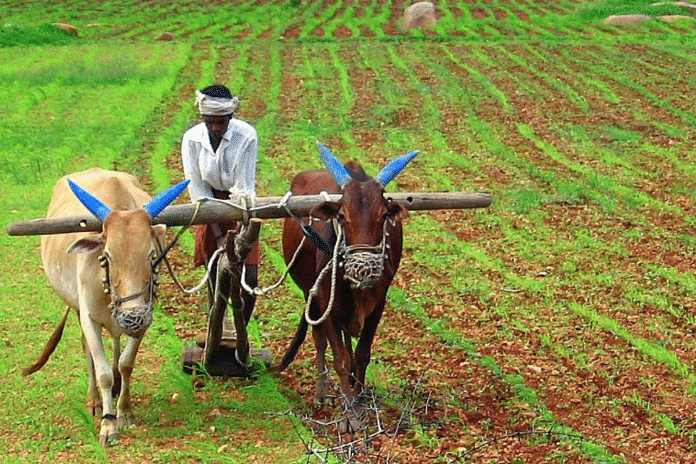New Delhi: In a country where two-third of all pending cases are related to property disputes, a complex land reform to check fraud and ‘benami’ transactions that has been in the works for over a decade is finally inching towards completion.
By March 2024, India aims to digitise 100 per cent of its land records and the land registration process, and give a unique 14-digit alpha-numeric identity, also called Bhu-Aadhaar, to each land parcel, senior officials of the Department of Land Resources (DoLR) under the Union Rural Development Ministry told ThePrint.
“The Unique Land Parcel Identification Number (ULPIN) or Bhu-Aadhaar will have longitude and latitude coordinates of the land parcel and is based on detailed surveys and geo-referenced cadastral maps. It will cover all land parcels — rural as well as urban. We are hopeful of completing the ULPIN project by March 2024,” Hukum Singh Meena, additional secretary, DoLR, told ThePrint.
So far, ULPIN has already been rolled out in 26 states and Union territories — Andhra Pradesh, Jharkhand, Goa, Bihar, Odisha, Sikkim, Gujarat, Maharashtra, Rajasthan, Haryana, Tripura, Chhattisgarh, Jammu & Kashmir, Assam, Madhya Pradesh, Nagaland, Mizoram, Tamil Nadu, Punjab, Dadra & Nagar Haveli and Daman & Diu, Himachal Pradesh, West Bengal, Uttar Pradesh, Uttarakhand, Kerala and Ladakh.
Except Meghalaya, which has a tradition of community ownership of land parcels, it is currently under implementation in the remaining states and Union territories.
ULPIN is part of the Digital India Land Records Modernisation Programme (DILRMP), a 100 per cent centrally funded scheme. It was earlier known as the National Land Record Modernisation Programme and was approved by the cabinet in August 2008. It was later revamped as DILRMP and implemented as a central sector scheme from 1 April 2016.
Also Read: Budget 2023 for tech sector: Digital India funds slashed, PAN ‘common identifier’, KYCs simplified
What is Bhu-Aadhaar & why is it needed?
So far, different states were using different methods for assigning unique IDs to land parcels in computerisation of land records.
This made extraction of important information on farmers and their land difficult and cumbersome. In many instances, the land parcel numbers were repeated in each village, making it difficult to establish farmer-land relationships.
“There was no standardisation of data. With ULPIN, the idea is to have one nation, one registration system,” Meena said.
It was to address this that DoLR along with the Ministry of Electronics and Information Technology, Department of Science and Technology and the National Remote Sensing Centre came up with the Unique Land Parcel Identification Number system.
The 14-digit alpha-numeric unique ID is assigned to each land parcel based on geo coordinates of the parcel’s vertices. It complies with the Electronic Commerce Code Management Association (ECCMA) standard and the Open Geospatial Consortium (OGC) standard.
According to a DoLR presentation, accessed by ThePrint, a unique ID will help in sharing of land record data across departments, financial institutions and all stakeholders.
“Standardisation at data and application level would bring in effective integration and interoperability across departments,” the presentation stated.
It will also help farmers leverage their land and use it as a collateral to borrow money from banks.
Addressing a national conference on “Bhumi-Samvad IV on implementation of ULPIN” on 17 March, Rural Development Minister Giriraj Singh said that once the digitisation process of land records and registration is complete, it will help mitigate the pendency of court cases involving land disputes.
“The GDP loss to the country’s economy is about 1 per cent due to projects being stalled over litigation involving land disputes. A study says 66 per cent of all civil suits in India are related to land or property disputes, and the average pendency of a land acquisition dispute is 20 years,” Singh said.
Also Read: India needs National Technology Coordinator. An Indian model in digital infrastructure is ready
Also on the anvil: Transliteration of Record of Rights
It’s not just ULPIN. The Digital India Land Records Modernisation Programme also has other components, including transliterating the Records of Rights to any of the 22 languages recognised by the Constitution.
Currently, the Records of Rights in each state and Uion territory are maintained in local languages.
“The linguistic barriers pose serious challenges for access of information and usage in understandable form. To address this problem in land governance of the country, the government, with the technical support of the Centre for Development of Advanced Computing, Pune, has undertaken an initiative to transliterate the Records of Rights available in local language to any of the 22 languages recognised by the Constitution,” DoLR has said in the presentation.
DoLR officials have told a parliamentary panel that it aims to implement all components of DILRMP at full pace by 31 March 2026. “Efforts are being made to complete One Nation One Registration by 2024,” the DoLR had told the parliamentary panel.
(Edited by Richa Mishra)
Also Read: Economic Survey hails UPI revolution during Covid & FY22 boom in rural internet connections



